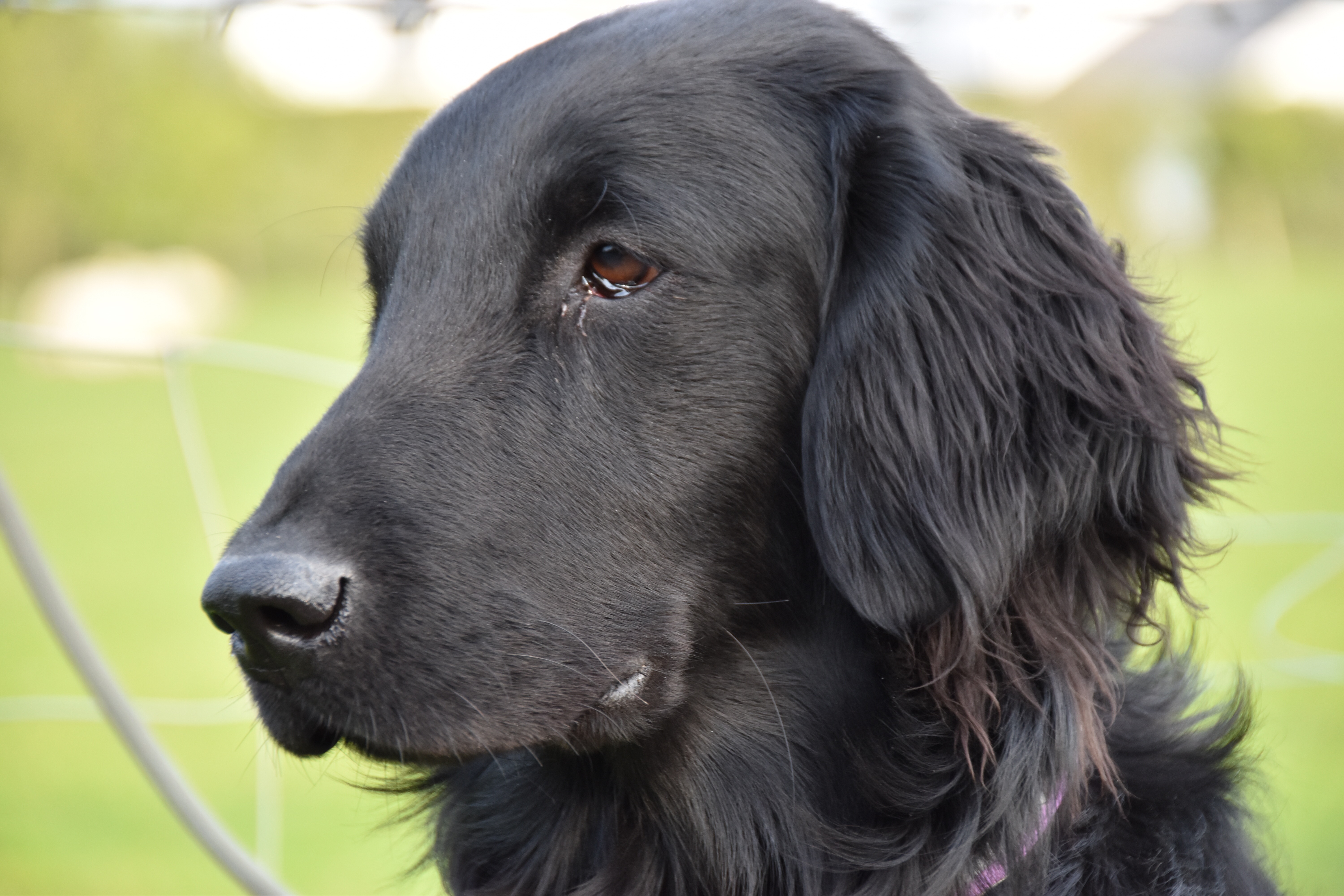Alaskan Malamute – Profile – Health Issues – Information you can use
The Alaskan Malamute
Origin, Ancient times. Original function, Heavy sled pulling, big game hunting. Today, Sled pulling, Companion. A popular family dog.
This dog was first known to be living among the native Inuit people known as the Mahlamuts, who lived along Norton Sound on Alaska’s Northwest Coast. The dogs served as hunting partners for big game such as seals and polar bears and hauled the heavy carcasses back home. The unforgiving environment meant that a less than optimal dog probably would not have been kept. When the first outside explorers came to the region in the 1700’s, they were impressed not only by the hardy dogs but also by the owners’ obvious attachment to them. When gold was discovered in 1896, a ton of outsiders came to Alaska.
The AKC registered the breed in 1935 and the Alaskan Malamute became a favorite family companion dog.
Yes. Malamutes do well in training and are used not only for sled pulling but in search and rescue work. clicker training works well. Actually, the CLICKER should be used for all your dogs.
Crate Training
Want to crate train your Alaskan Malamute puppy? It’s easy and if you’re interested, take a look and you’ll see what to do. Crate training your puppy will save many headaches and problems.
Potty Training
Some Alaskan Malamute puppies are slow/difficult to house train, potty train, toilet train, housebreak or whatever you want to call it. If you have a puppy, decide if you want to crate or paper potty train it. For the best results, we have a page at Crate vs Paper Potty Training which will help you decide and from there you can get all the information you need to get the job done. Always praise the pup profusely when she goes potty in the RIGHT PLACE so she knows she has done a good thing. Either method will work for this breed.
If you have an older dog, take the dog outside every two hours until she gets the idea which door leads to her potty area. Older dogs catch on to the potty or housebreaking pretty fast once they are shown what to do.
Alaskan Malamute
Alaskan Malamute’s are independent, strong-willed, fun-loving working dogs and family companions. This dog loves to run and roam as well as pull carts and sleds. It is a family dog and as long as it gets enough daily exercise, it is well mannered in the home. If missing the proper exercise, this breed can become frustrated and destructive. The Alaskan Malamute is friendly and sociable toward people but may become aggressive toward strange pets or dogs. Some Malamutes tend to dominate; others dig and howl. It is important that this breed is heavily socialized starting very young and continued through life. They need to be managed with a firm but kind hand and am owner who can be an alpha leader and maintain a dominant position over the dog at all times.
If you happen to get an Alaskan Malamute with a separation anxiety problem, that can be dealt with by investing a few hours of work on your part and some “tough love.”
Friendly Toward Other Dogs
No, Enjoys company of his own pack of sled dogs, but not strange dogs.
Friendly Toward Other Pets
No, Malamutes need to be raised with them. Top
Friendly Toward Strangers
Yes, likes people in general.
Playfulness
Yes, somewhat playful. Rate 6 bars out of 10.
Very affectionate. Alaskan Malamute’s love their family and people overall.
Yes, good with older children (6 and up) Younger kids need close supervision, as this is a big, heavy dog and while tolerant, can accidentally cause harm to toddlers. Otherwise, they get along well with kids.
Good with Seniors over 65?
No. Malamutes need too much exercise.
Living environment
House with a medium sized fenced yard is best, or a farm or ranch. Loves cold weather. Can not be left out in hot weather. Top
Energy level
Moderately high. They have lots of stamina.
High. Alaskan Malamutes can run for miles. They need adequate walks on leash and vigorous games of fetch or a good jogging session.
Somewhat. Malamutes like people a little too much.
Somewhat. Will protect family if threatened.
Brushing 2 times a week, daily in summer when shedding. Use a stiff bristle brush from the pet store. Top
-
3rd book from left – “A Dog Who’s Always Welcome” takes obedience training way beyond the normal and into THERAPY DOG territory for the best mannered, most admired dog in the neighborhood. Your Malamute will be welcome everywhere!
In the event you decide to go looking for Alaskan Malamute puppies, be SURE to find reputable breeders that really know what they are doing. Be sure the puppy has been VERY well socialized and started in obedience training. It’s not often that Malamutes turn up in dog pounds and shelters but you might check anyway.
Alaskan Malemute Breeders with puppies for sale. You should find what you need at this site.
Alaskan Malamute Rescue
In the event you are seriously considering the adoption of an Alaskan Malamute and are looking for a rescue group or groups in your state, here are several links that might help:
Petfinder – Alaskan Malamute Rescue — Nationwide If you adopt one, try to locate dog health records for possible future use.
Alaskan Malamute Rescue League.
You can get email and phone numbers to contact various people or groups with these dogs for adoption. You may need to go online to search for Alaskan Malamute Rescue if you don’t find what you need at these sites.
This is basically a healthy breed. Don’t let the list below scare you! Your own dog will probably never have ANY of these problems. These are dog illness and medical problems this breed is prone to that have been listed by various veterinarians at different times over the past decade or so and some pertain to puppies and very young dogs that a breeder would deal with.
The information contained herein has been gathered from numerous books by veterinarians and is intended as general information only. Every dog and situation is different. You must see your vet. Our information is for general interest only and not intended to replace the advice provided by your own veterinarian.
-
Hip dysplasia – Hind end limping, back leg acts lame. Wear and time causes the femur to fit poorly into the pelvic socket with improper rotation causing great pain, lameness and difficulty walking for the Alaskan Malamute. You may notice the dog “hopping”” like a rabbit when running plus hesitating to climb stairs, all due to pain in the hind quarters. The problem actually starts as a very young puppy with an abnormal formation of the hip joint and grows progressively. A vet can locate this with a diagnostics test.

